This Is How You Get that Dream Cooking Vacation in Italy
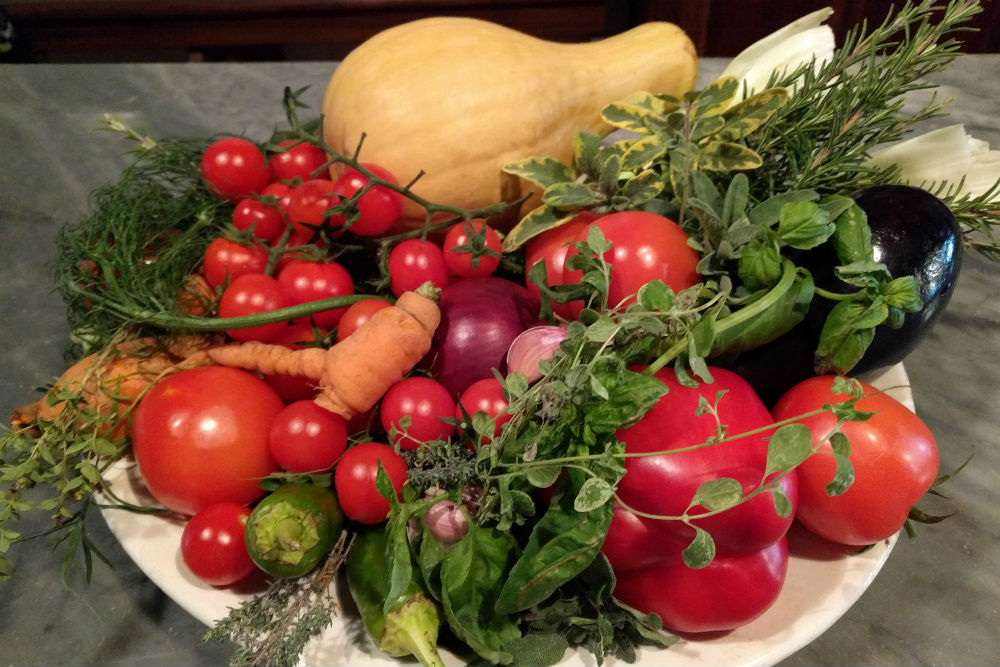
Most travelers who think about taking a cooking vacation in Italy automatically start looking for a cooking school—meaning that, for a week or so, they’ll head to one spot and take lessons from the same team in the same place each day. But that is not the best recipe for success. There’s a much smarter way.
For years, my mom had been dreaming of a cooking vacation in Italy, so when a window opened up for the two of us to do it together as a mother-daughter trip, I was determined that it not only be special and delicious, but that it exceed her expectations. My first step: Filling out the trip request form for Maria Gabriella Landers, one of the Italy travel specialists on Wendy’s WOW List of Trusted Travel Experts.
Right in our initial conversation, Maria disabused us of the misconception that we should base ourselves in a major city like Rome or Florence and spend the week in classes. Why sleep in the same hotel every night, spend your days in an institutional kitchen, and take limited day trips, when you can turn your entire vacation into a moving culinary education instead, with a different kitchen, different view, different local chefs, and different delicious lessons every day? In the end, Maria arranged an ongoing feast for us that we’ll keep talking about, and using recipes from, forever.
Here are seven benefits to skipping school and indulging in a mobile culinary trip instead:
1. You cook in real people’s kitchens.
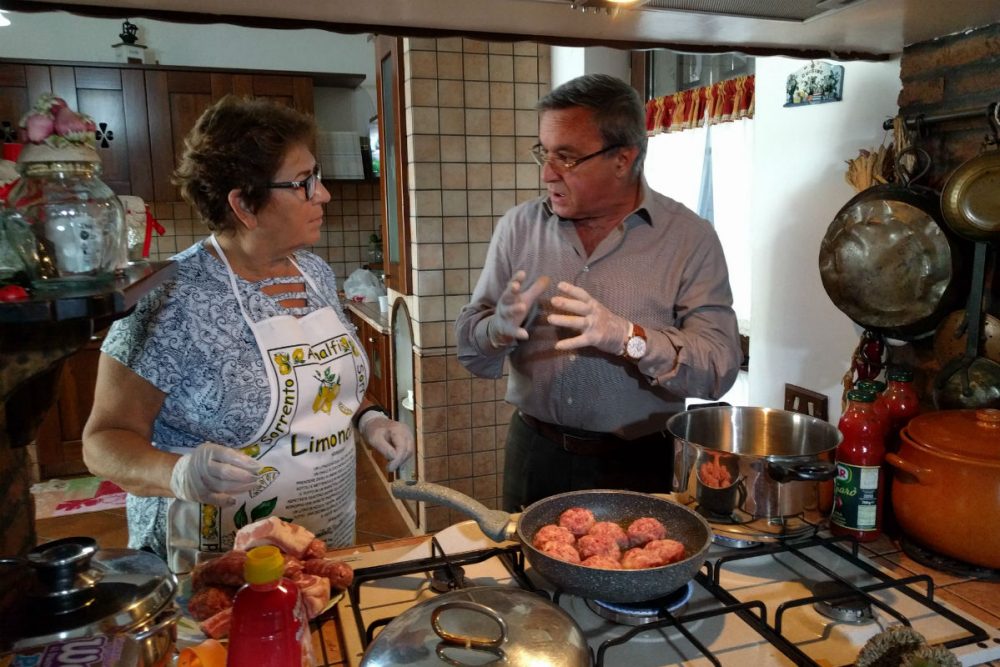
Tony taught us his family’s meatball recipe as we cooked in his home kitchen with him and his daughter.
Over the course of our ten-day trip, we spent time in a variety of charming kitchens with fascinating locals, each of whom made us feel like family by the time we hugged and said good-bye, stuffed and happy. We cooked in:
- a suburban family home in Pompeii with lifelong resident Tony, who grew up around the ruins where his father owned a food stand (now run by his brother) and who shared his family recipe for meatballs.
- an agriturismo outside Montefalco in Umbria, where owner-chef Giuseppe and his wife taught us how to make cheese ravioli from scratch, zucchini tarts, and molten chocolate mini cakes.
- a centuries-old organic family farm near Spoleto with Ettore and his wife, Lorella, who showed us how to make the best vegetable-laden tomato sauce, handmade gnocchi, and tarts with lemon-scented crust called crostata (which are now a regular dessert at our own family’s holiday meals). Afterward, we sat in their dining room and feasted all together, drizzling olive oil from their own trees onto our bread.
- a glamorous farm-to-table B&B with an acclaimed chef who picked ingredients right from her garden and seemed to have an endless menu of desserts for us to prepare and then gobble down.
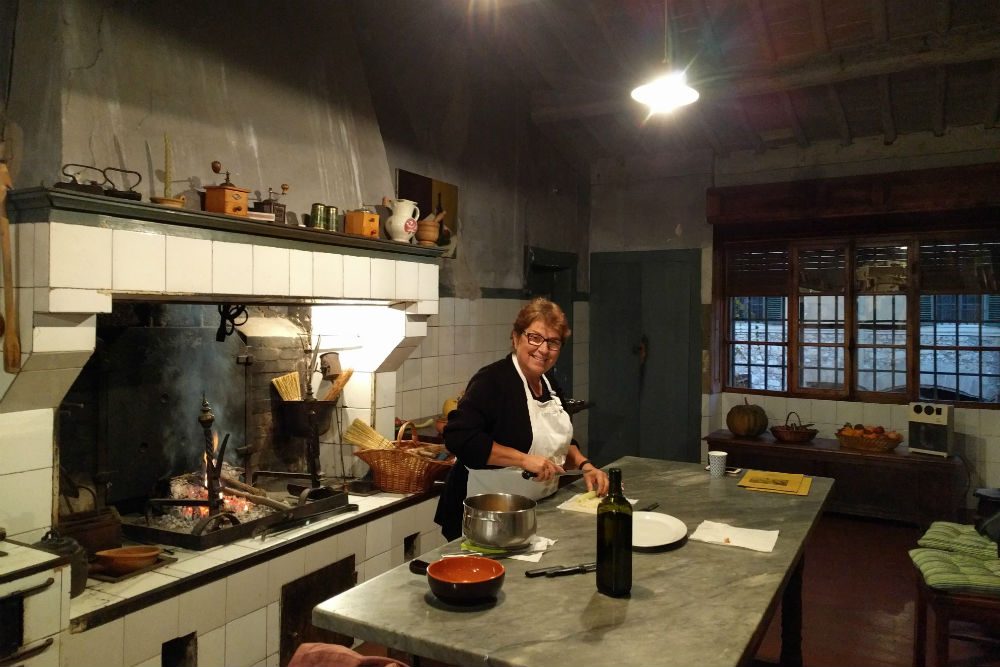
We cooked a pasta feast in a centuries-old family farmhouse with husband and wife Ettore and Lorella. Here my mom is preparing some vegetables for the sauce.
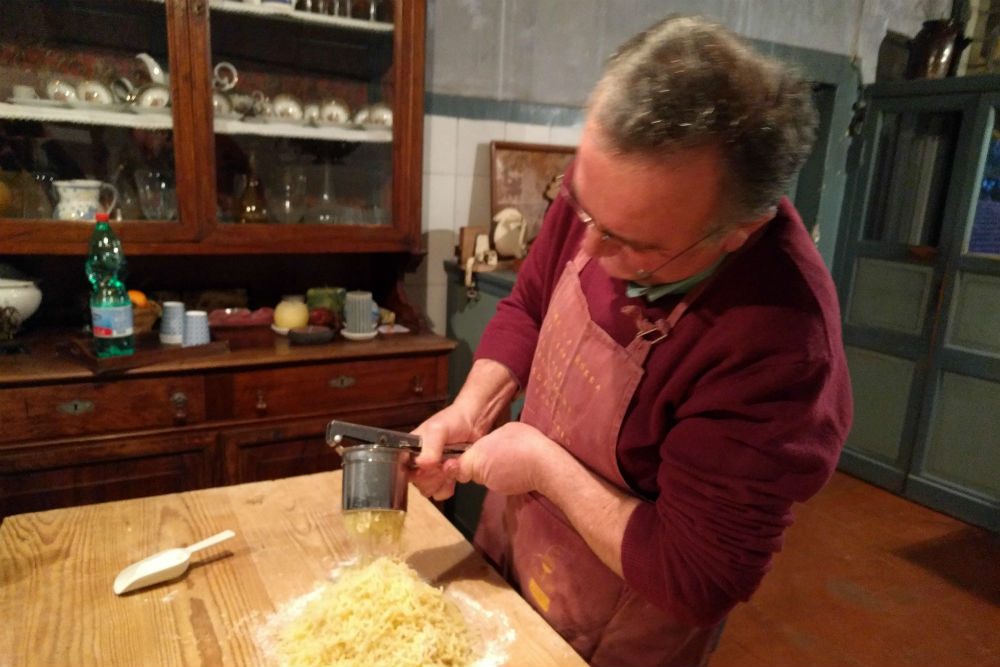
Ettore showed us how to make fresh gnocchi dough that we later replicated easily at home. So good!
Maria also arranged:
•one gelato-making night at the happiest ice cream shop I’ve ever seen (where the owner, Ricardo, let us taste every single flavor in the store)
•two walking food tours of Rome and Naples, to taste each city’s signature snacks
•visits to a goat cheese and wine farm, a vineyard, a chocolate factory, and an olive oil mill
These were more than hands-on experiences. They were extended opportunities to get to know people, to talk and laugh with them, and to learn about their lives and share about ours.
2. You meet local people and get to know them and their friends and families.
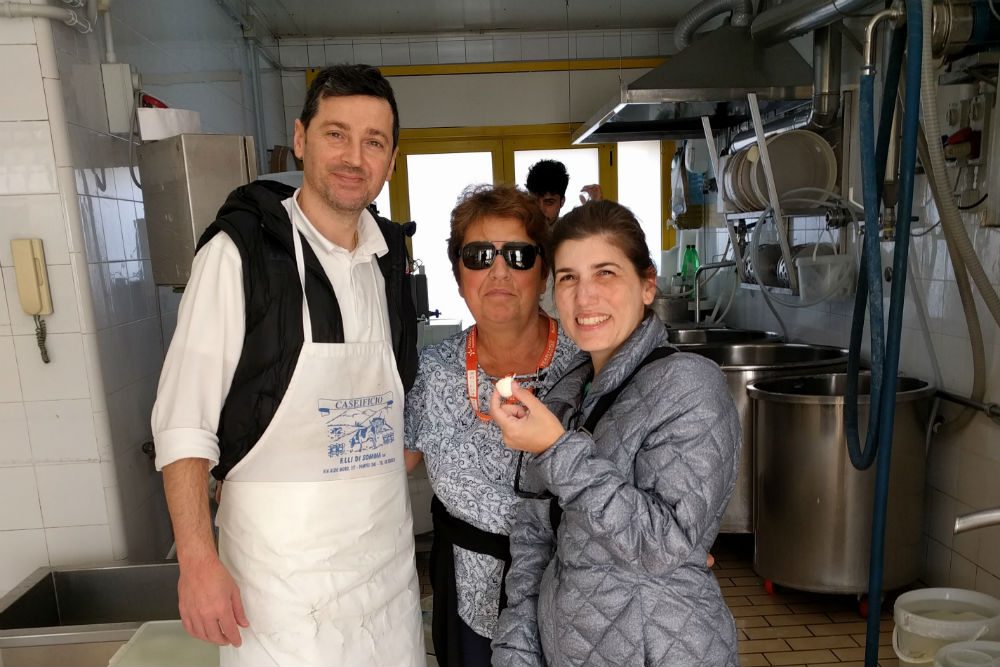
That’s us with Tony’s stepson, who runs a cheese shop a few blocks away. We ate mozzarella cheese he’d made that morning!
Every time we cooked, we didn’t only meet the chef. We met husbands, wives, daughters, sons, and friends, sometimes because they were helping us out and other times because they stopped by in the regular course of their day. At Giuseppe’s agriturismo, his wife joined us in the kitchen, and we met his son later in the day. And at Tony’s, not only did we meet his daughter who helped us prepare her mother’s family-famous meatballs (mom was away visiting her own mother), but we also walked into town to visit the cheese shop that Tony’s stepson owns and we got to taste mozzarella he’d made that morning. Then, when we drove over to the Pompeii ruins, where Tony is a professional guide, we had the chance to meet his mom and his brother, who now runs the stand formerly run by his dad.
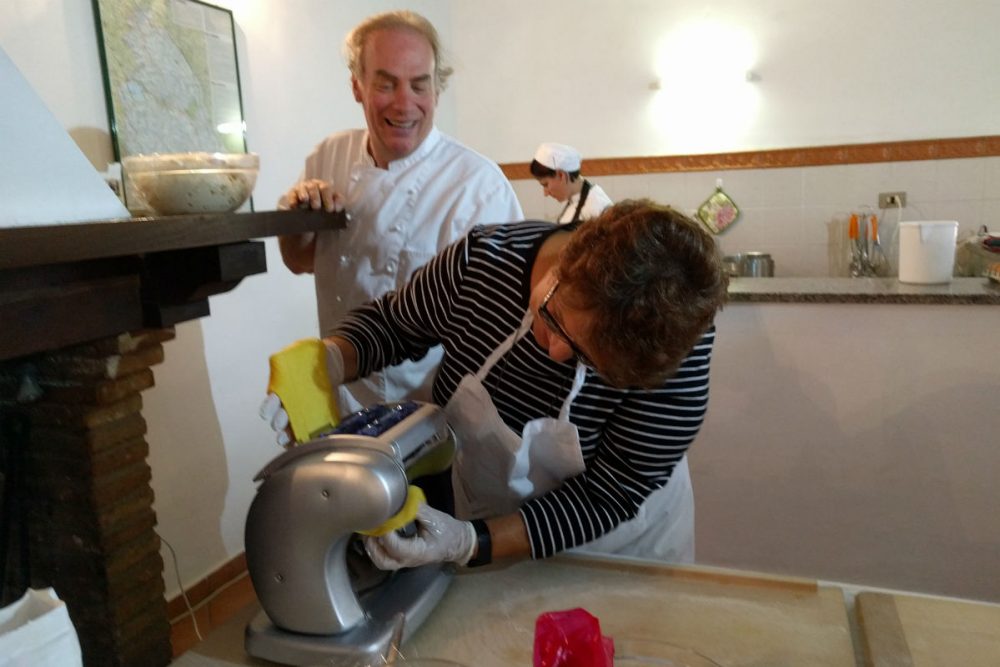
Giuseppe’s kitchen was a lively, fun place to be. His wife helped us prepare our lunch, and a few of his staff pitched in to make us feel welcome too. That’s my mom pressing pasta for ravioli.
And at the newly opened Amandola Gelateria in Foligno, where we donned fedoras and aprons like the rest of the smiling staff as we crafted ice cream with the freshest ingredients with owner-chef Ricardo, we also met his wife, some neighborhood locals who seem to use the shop as their regular hangout, and a master gelato maker who was visiting Ricardo (a master in his own right) to brainstorm new flavors and recipes.
3. You learn about local culinary traditions.
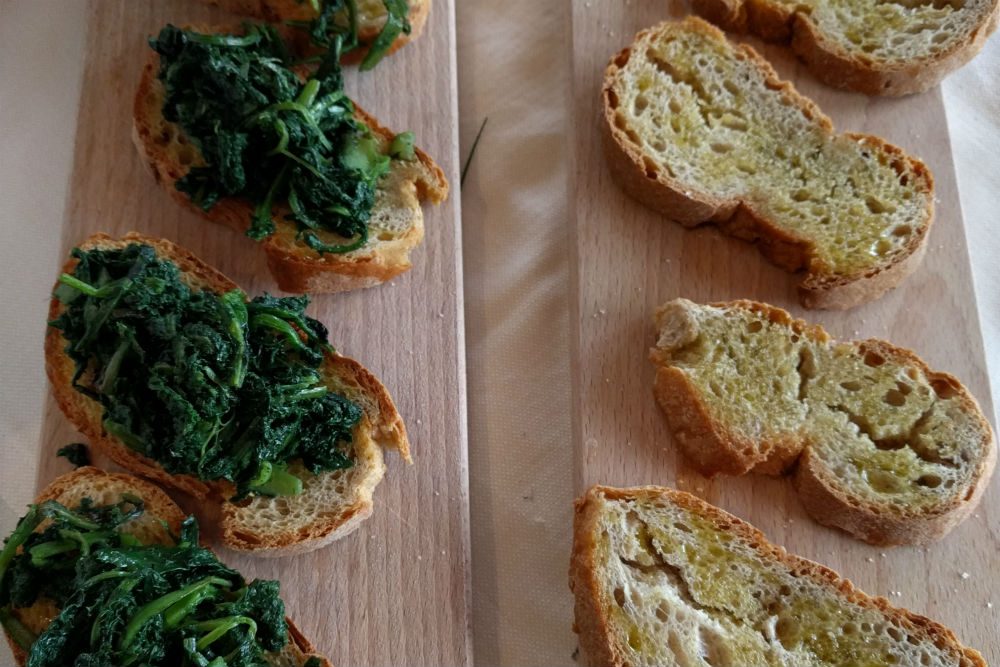
The bread in Umbria is never made with salt. It gets all its flavor from natural ingredients and that delicious “new” olive oil.
By cooking with real people, we were clued into regional tastes—like when we baked bread with Giuseppe and learned why Umbrians never add salt to their loaves. According to local legend, it’s a tradition that began in the Middle Ages when a pope imposed a salt tax as part of an effort to limit Perugia’s autonomy. The locals rebelled by simply not buying any, and to this day, you can still taste their independent streak in the unsalted bread on every family’s table. You won’t miss the salt, though, because Umbria’s olive oil is so unbelievably delicious—another culinary tradition you won’t experience the same way in a school. My favorite “lesson” was about a type of olive oil I’d never heard of: new olive oil.
It’s the most recently pressed olive oil possible, basically fresh off the tree. And early November is the season for it. Around this time every year, everyone in Umbria harvests their olives. (And everyone in Umbria has olive trees on their property—that’s just the way it is.) For the best flavor, those olives must be pressed into oil within 48 hours. Once the oil is extracted, big containers of it are stored in cellars and then siphoned off into smaller bottles for use throughout the year.
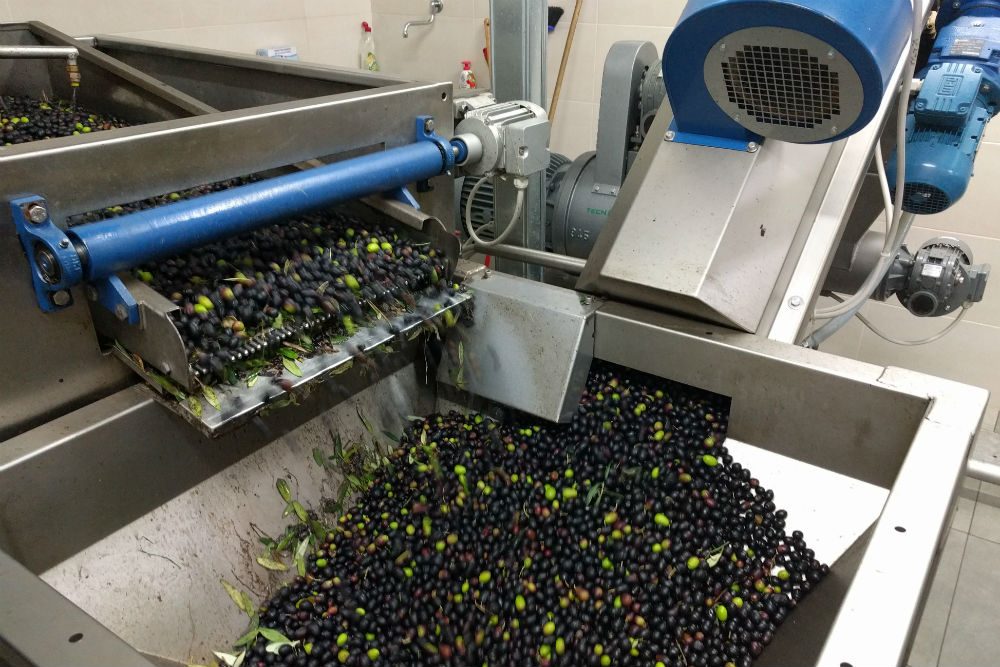
We saw how olives are pressed into oil at a local mill run by two sisters. The area residents lug in their hand-picked olives and then wait around as the fruit is transformed into oil.
Because our timing was perfect, we got to taste many different family olive oils as we visited our different kitchens and restaurants, and I fell in love with the fresh, grassy and almost garlicky flavor that is worlds away from the stuff we buy here at home. And because she saw that I was so interested in this unique local tradition, our guide Cristina arranged, on the spur of the moment, for us to visit a family-run olive mill one afternoon. We got a tour from one of the sisters while half a dozen area residents were hanging out inside, waiting for their oil to be finished. (We learned that Umbrians are vigilant about watching their oil being pressed, to ensure that their olives don’t get mistaken for someone else’s. They are protective!)
4. The ingredients are as fresh as they come.
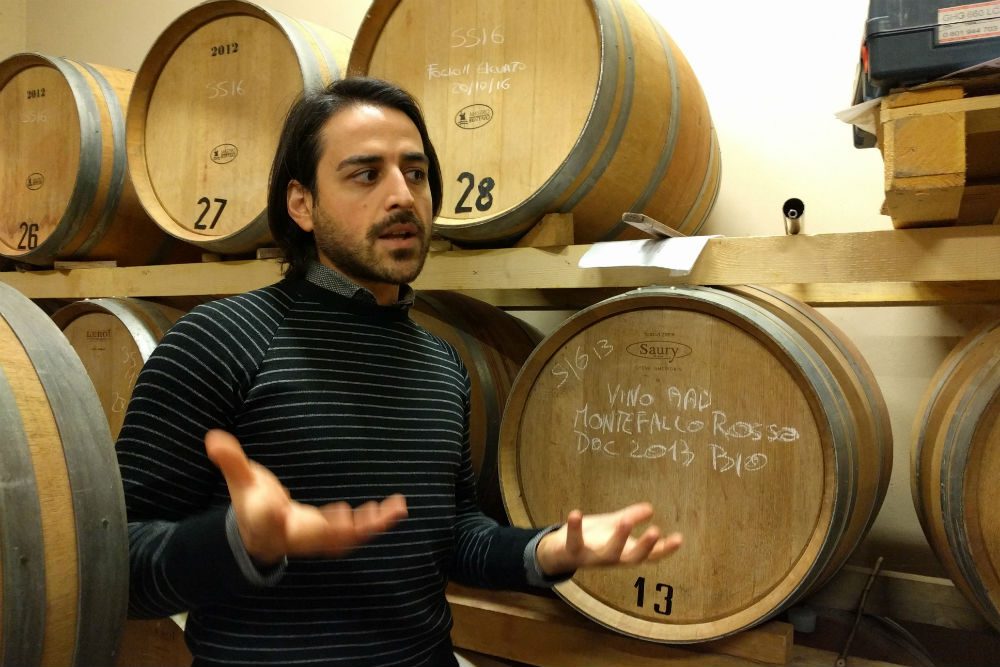
We got a behind-the-scenes tour with Diego Calcabrina, one half of the brother duo that runs a biodynamic wine and goat-cheese farm.
In addition to tasting each family’s personal new olive oil, we sampled vegetables from their own gardens, cheese from goats down the road, wine from their neighbors’ grapes, and fruit from their orchards. In fact, at Villa Roncalli, Chef Luisa walked out to her field directly before meeting us and picked what looked best to her, then we prepared a vegetable risotto and an egg dish with herbs and greens. On another day, after a tour of Calcabrina wine and cheese farm—run by two brothers who pick all their grapes by hand, make only single-blend wines, and don’t use any antibiotics for their cheese—we went to their restaurant to taste their wares. Not 20 minutes prior, we had been petting their goats.
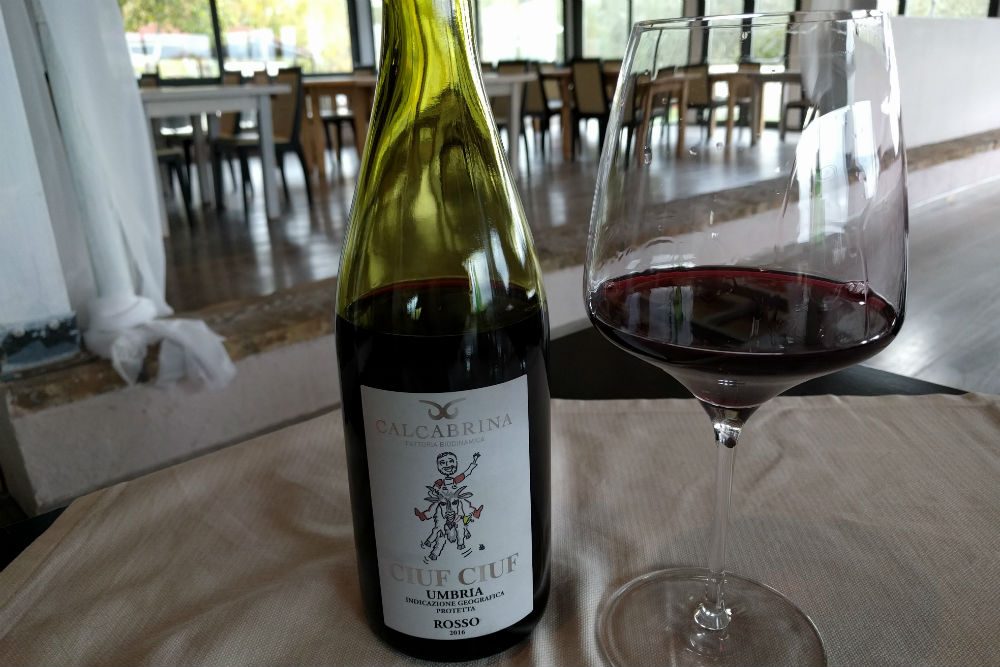
Then we sampled the wine…
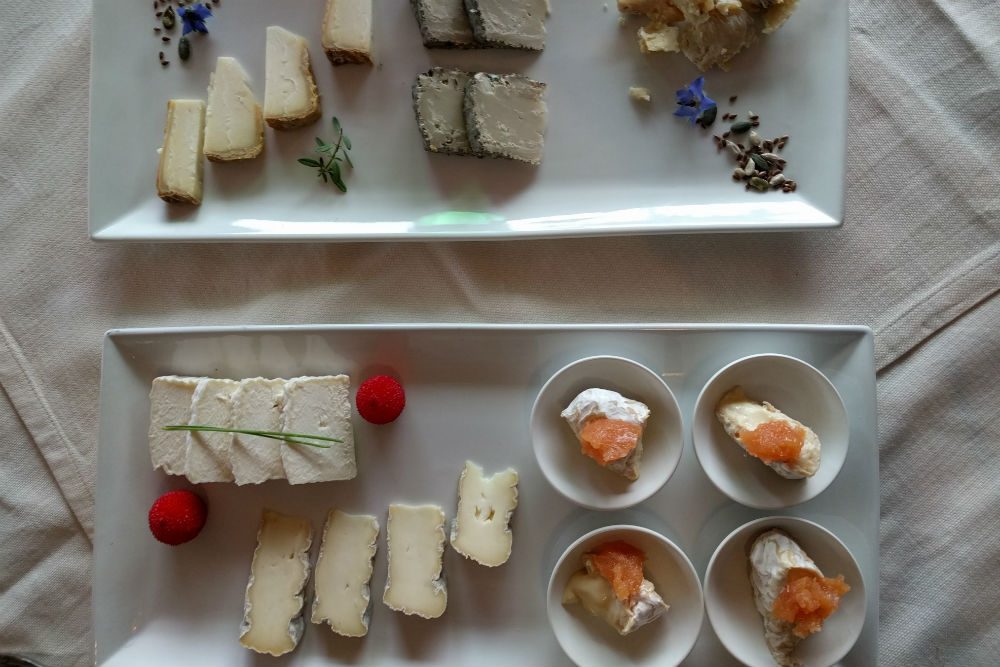
…and the cheese.
And moments like that were in addition to the steady stream of local wine and olive oil with every meal—meaning, wine from grapes picked in fields we’d passed and oil from olive trees in our hosts’ backyards.
5. You can customize the menus for likes, dislikes, and restrictions.
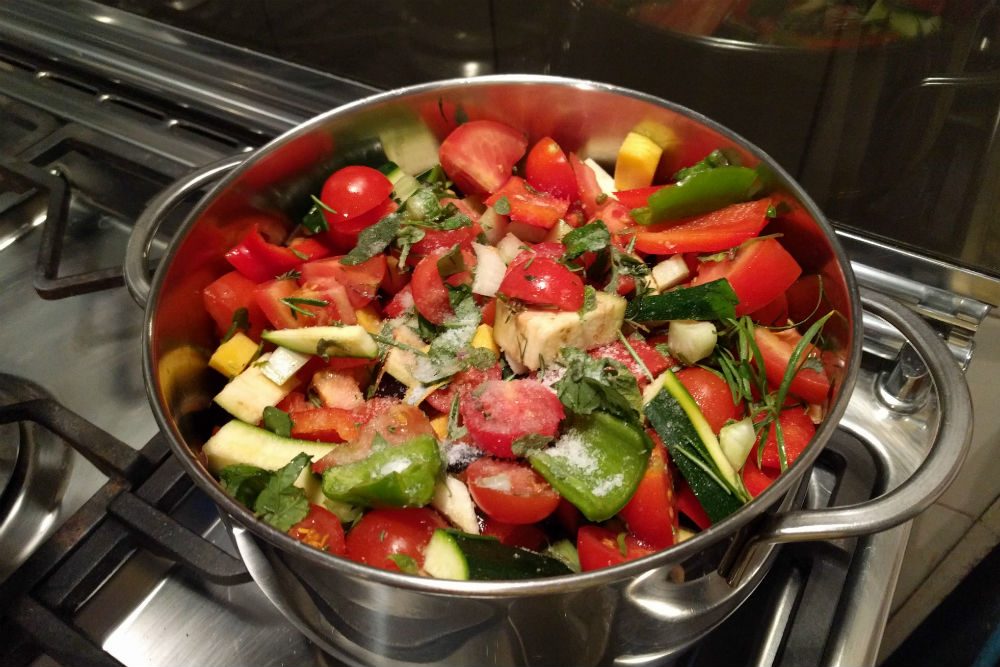
At Ettore and Lorella’s farmhouse, we adjusted his family’s go-to tomato sauce recipe to leave out the meat—just look at all those vegetables!
When the cooking experience is private and informal, as ours were, the menu can be customized however you need it to be. My mother and I each have several food allergies and restrictions. Maria collected our big list of prohibited ingredients, and not only did she make it work, but she and our hosts also made sure it was all delicious. What impressed me even more was how everyone handled the fact that I’m vegetarian but my mom enjoys meat and fish. In most cases that meant our hosts planned two entrées, or two sauces. My mom never felt that she had to give anything up, and I never felt that the veggie option was an afterthought.
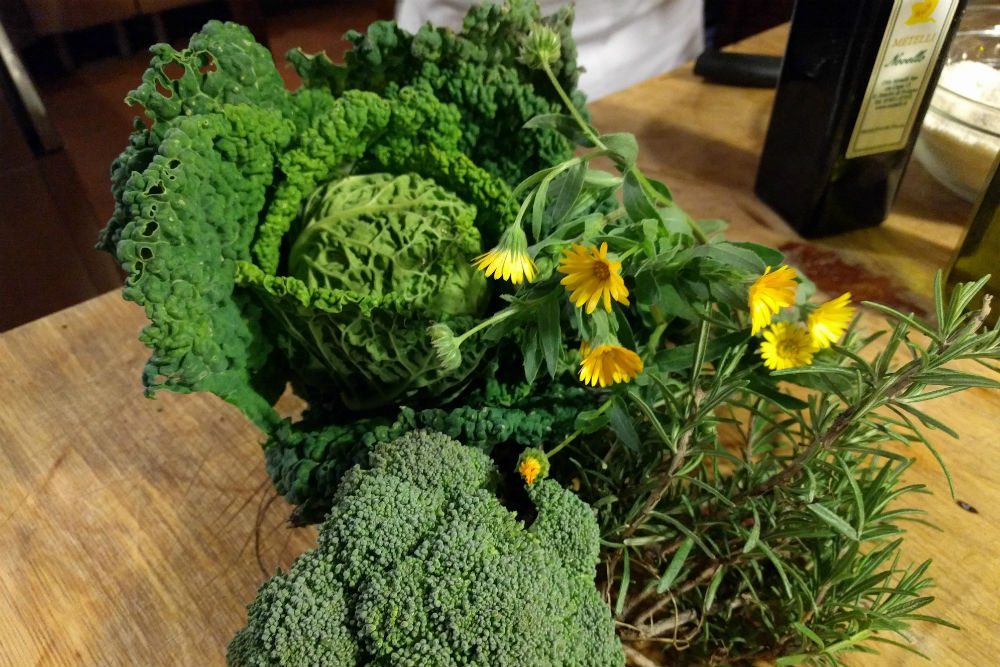
Chef Luisa of Villa Roncalli picked these greens from her garden right before we arrived…
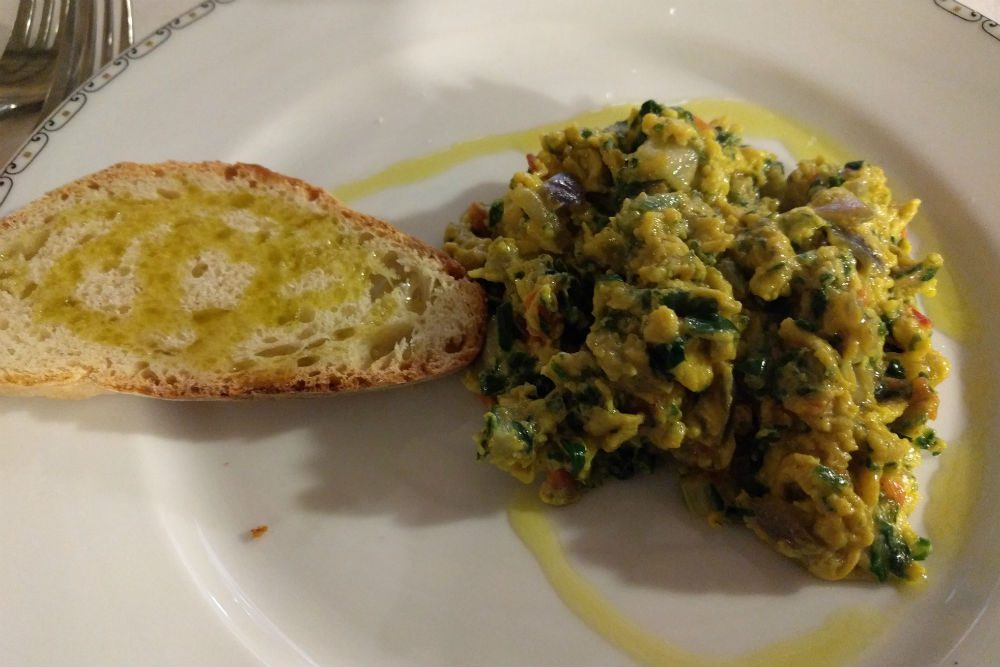
And then we made this delicious egg-vegetable dish—a cross between a scramble and a frittata, and incredibly delicious.
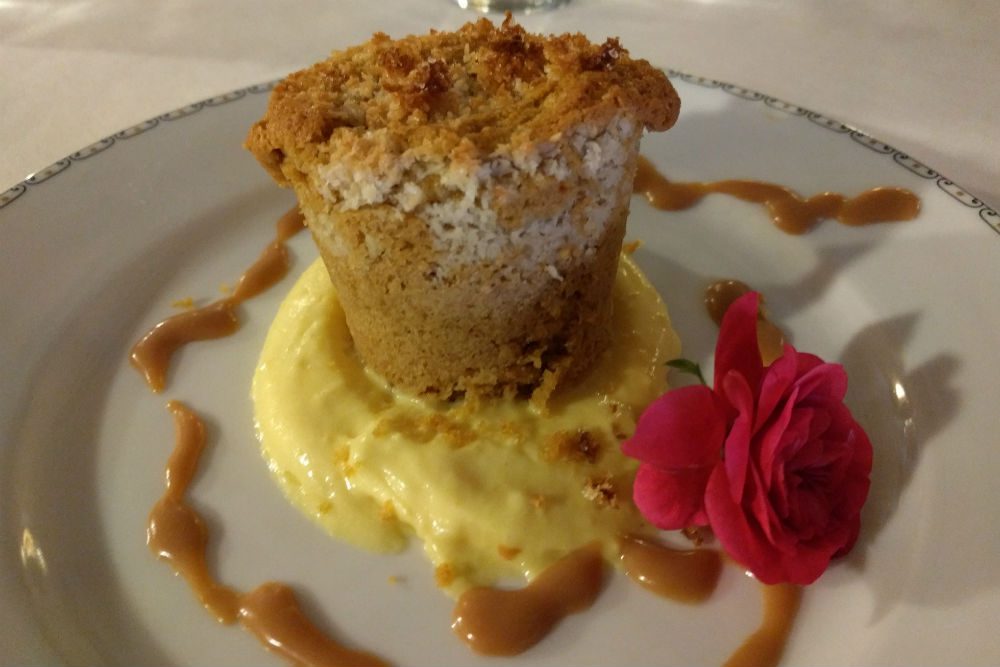
And because I like dessert, we made a ton of it. This was a delicate coffee-sambuca cake we made with Chef Luisa. I was skeptical because I don’t love licorice, but I learned to trust the chef: The combination of flavors was perfect.
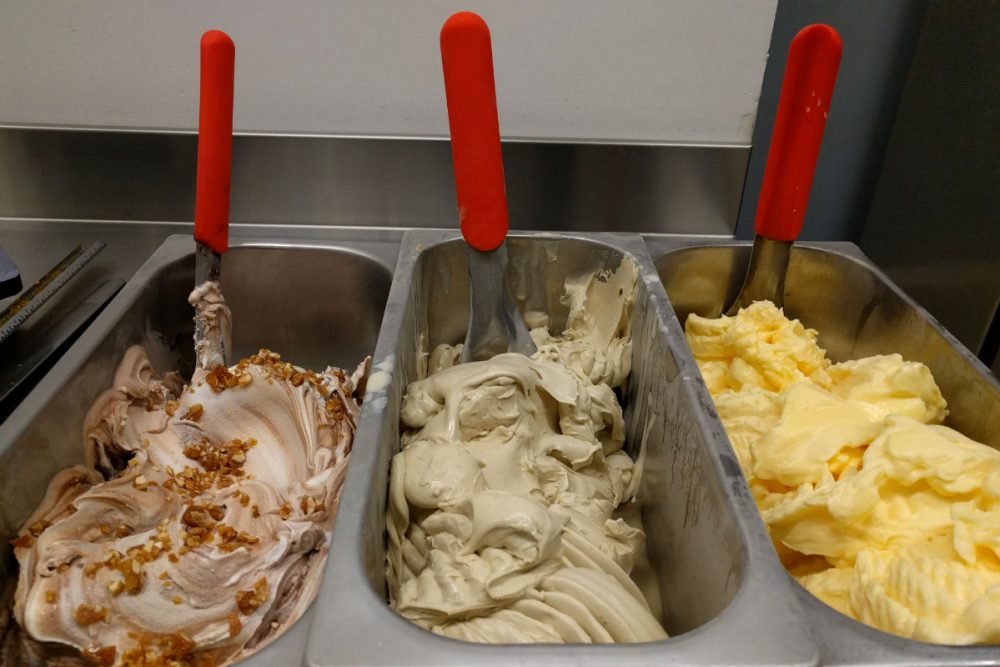
We also got to customize our gelato! These are the three flavors we made with Ricardo at Amandola Gelateria: Nutella with candied almond crunch, natural pistachio, and clementine (from fresh clementines we cut and juiced ourselves!).
6. You can truly replicate the recipes at home.
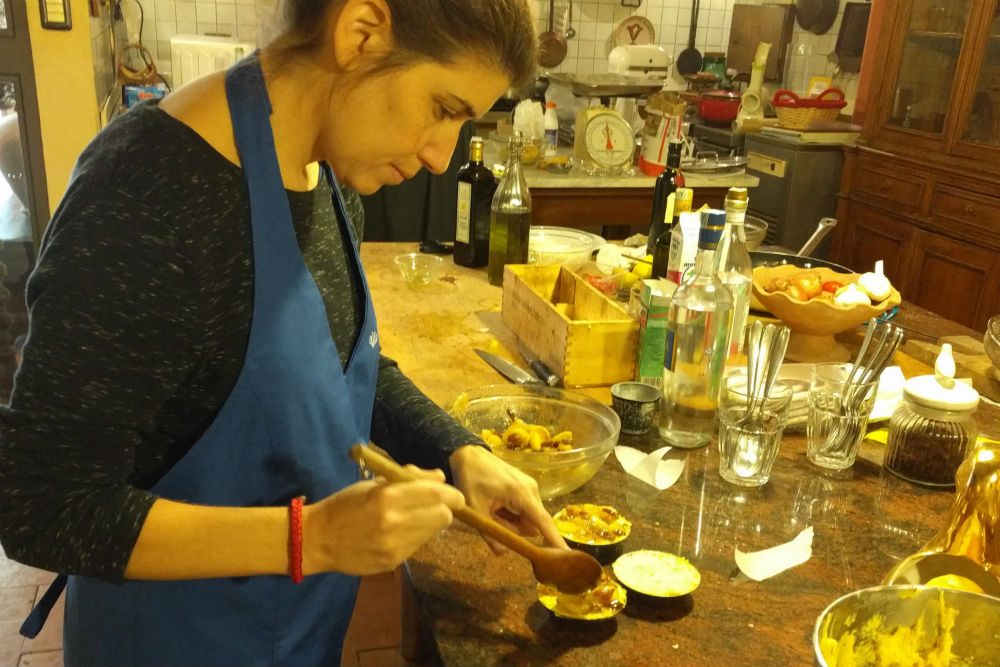
My mom and I loved the jam-filled, lemon-crusted crostata that we made with Ettore and Lorella so much that we baked them at home for Thanksgiving. My mom also made them for a party with her friends.
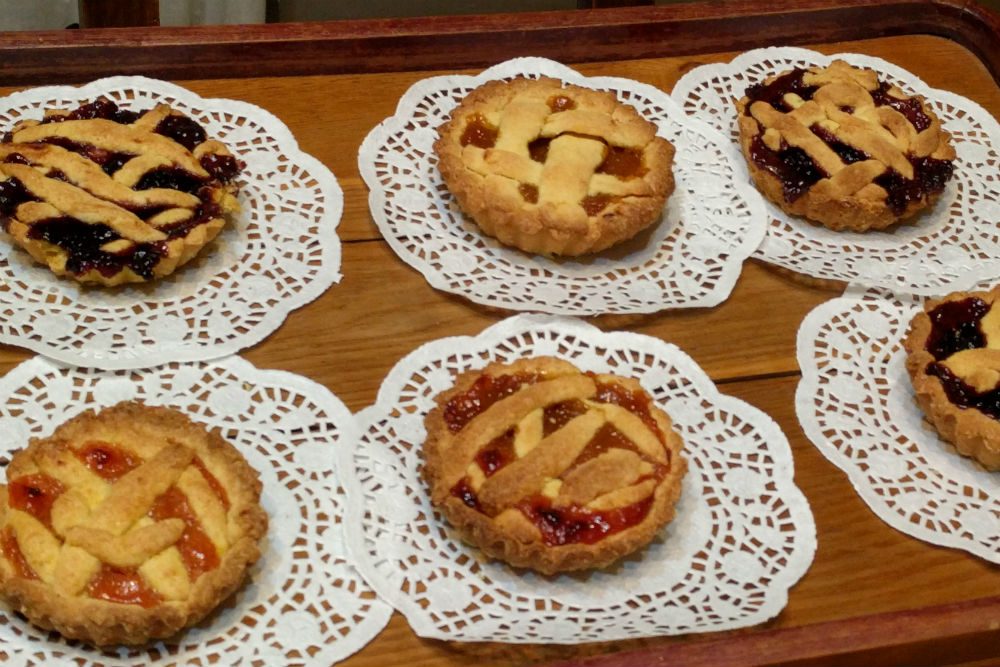
They are now a Cohen dessert staple.
Culinary schools sometimes have specialty ingredients and professional machines—things you would never have in your own home. But on our trip, we worked with what people had in their kitchens—normal ingredients and gadgets. In fact, my mom and I were able to use what we learned to prepare a special Italian Thanksgiving feast a few weeks after we got home. And even though we didn’t have fresh Umbrian tomatoes from Luisa’s garden or Lorella’s jam from her orchard, we did have a canister of olive oil from Ettore’s farm, and it all turned out pretty close to what we’d eaten in Italy. (Pro tip: After a cooking vacation, invite friends and family over to share what you’ve learned. It’s a fun way to relive the trip and to share the spoils with those who couldn’t join you.)
7. You make true friends.
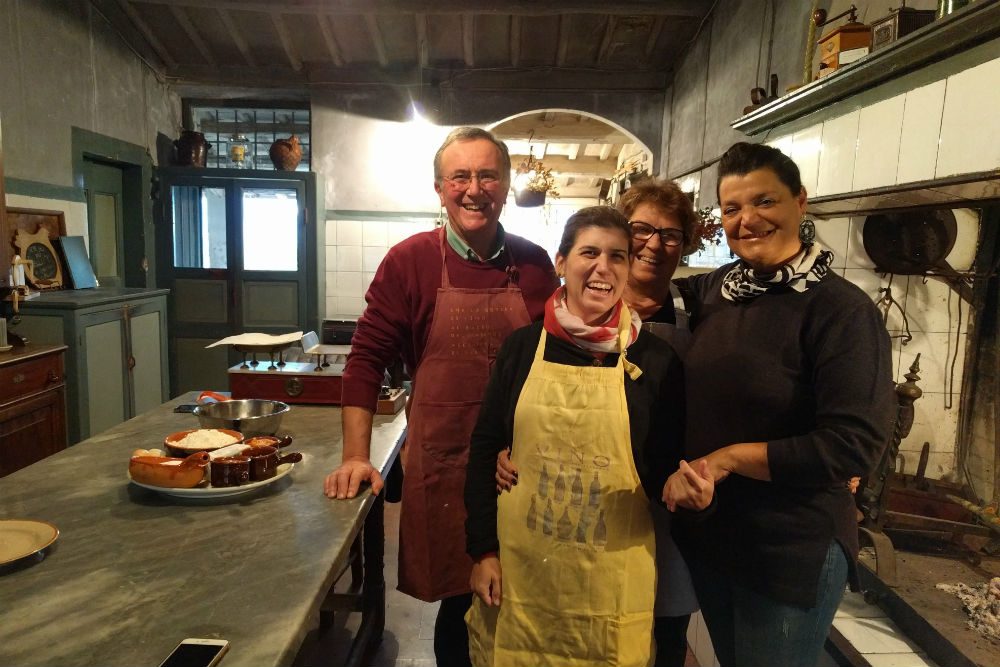
Something magical happens when you cook and dine with someone in their own home — you laugh, you share stories, and you make true friends.
A culinary school instructor may end up being an inspiration, but it’s unlikely they will become your friend. However, when you cook with people in their homes, when they show you their favorite recipes, when you sit down at the table with them and pass around delicious food that you all made together over laughter and conversation, you can’t help but feel affection for one another.
There is just something magical that happens while you chat and laugh with new friends in the kitchen and toast each other over a good meal. Yes, my mother and I came away with wonderful recipes and memories, but it was that authentic connection with warm, welcoming people that really satisfied us—something I think all travelers are hungry for. And if you get to mix up a little handmade gelato for dessert, well that’s just a bonus.
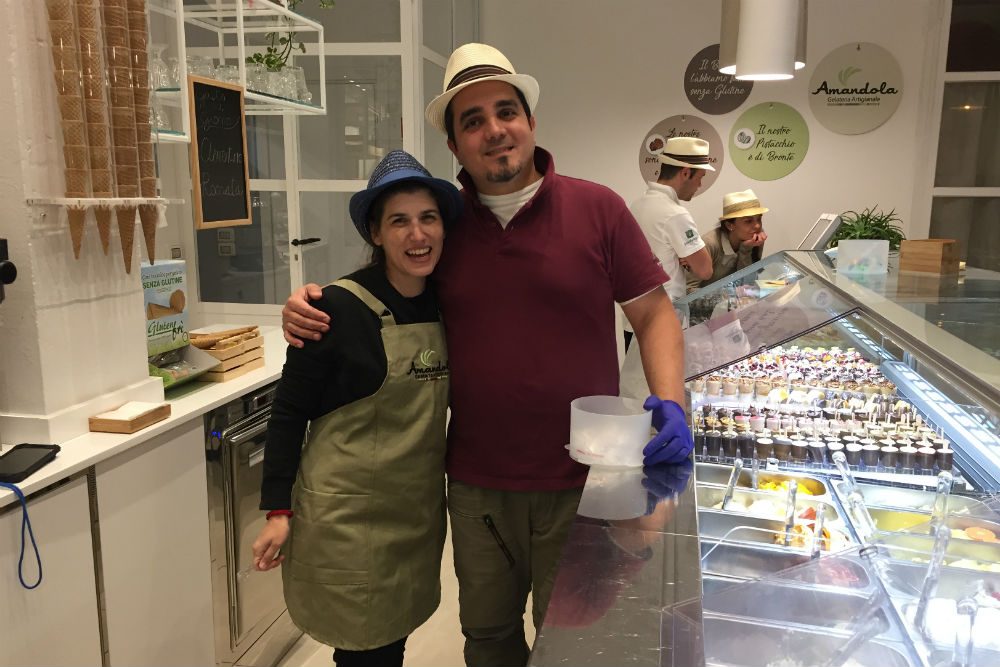
Ricardo is my new best friend and favorite person in the world. Did I mention he let us taste every gelato flavor in the shop? There were about 30.
Billie used Wendy’s WOW List system to plan this trip. She received a discounted media rate, but in keeping with WendyPerrin.com standard practice, coverage was not guaranteed and remained at our editorial discretion. You can read the signed agreement between WendyPerrin.com and Maria Gabriella Landers here. And, lest you think Billie received special treatment, you can read additional reviews of Maria’s trips, written by other WOW List travelers, here.
Be a smarter traveler: Read real travelers’ reviews of Wendy’s WOW List and use it to plan your next trip. You can also follow her on Facebook, Twitter @wendyperrin, and Instagram @wendyperrin, and sign up for her weekly newsletter to stay in the know.








How can I take the dream cooking in Italy. Thanks. Fred
Thank you for such a great idea! I would love a trip like the one you described. It appears you got to meet a bunch of people in their element and learn from them. I would love to do this!